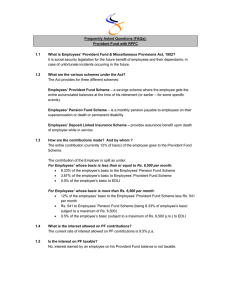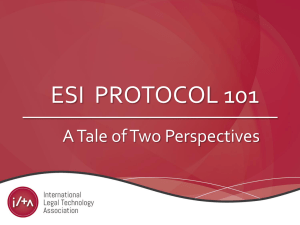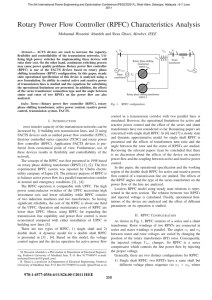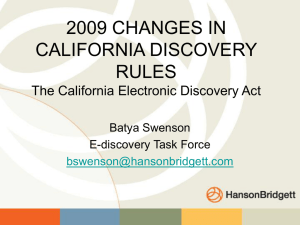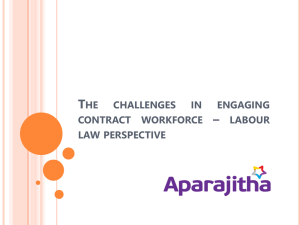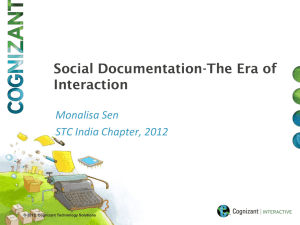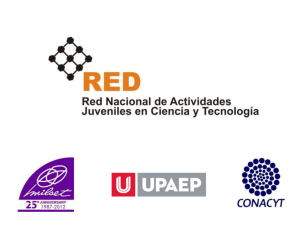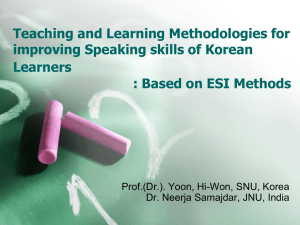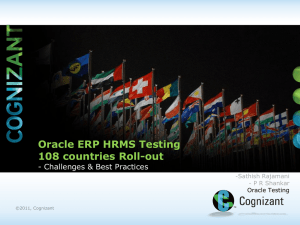A Corporate View by Cognizant - C-Quel
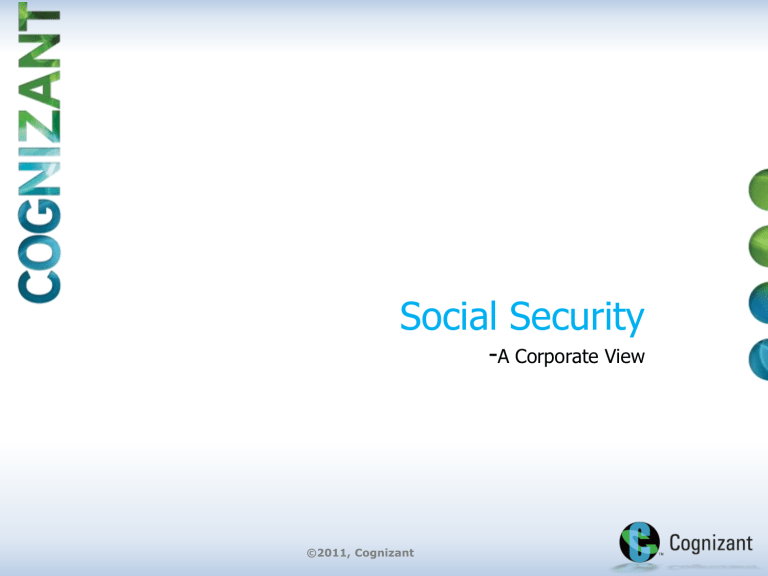
Social Security
-
A Corporate View
©2011, Cognizant
ESI- Highlights
Benefits
1. Super specialty treatment
2. Unlimited Dialysis
3 Special treatment to Eye & Bone
4. Disabled employee coverage
5. Benefits “ Anytime & Anywhere”.
6. Lower premium – Higher benefits
Technology
1 . IT Roll out – Employer support
2. Services of 24x7 Toll Free Helpline and facilitation center.
3. Reporting framework
2 | ©2010, Cognizant
Focus to Improvements
Maximizing Private Hospitals for all ailments
Online Pehchan Card
Employee Self Service - ESS in ESIC
Maximizing Cashless Hospitalization
One stop process of Claim reimbursement
3 | ©2010, Cognizant
ESI “Optimize & Attract”
“Nearest “hospitals networking
One Click approval for
Private hospitals
Value added preauthorization cashless treatment
Expand ESI counters in
Private Hospitals
Increase Women medical practitioners
Increase awareness of ESI procedures
4 | ©2010, Cognizant
Feedback recording….gains
In recent years, India, like several other developing countries, has established different types of social security scheme. The ESIS is one among such scheme. Its main objectives is to provide medical benefit’s for citizens who’s earnings fall under certain limit of income.
Scenario
IP 1 : I took my wife for antenatal care and for delivery to ESI hospital, Ayanavaram, Chennai. The treatment was very good
IP 2: I took my mother for asthma treatment to the ESI hospital Vellore. She was feeling better than when she was treated in a private hospital
IP 3: Fifteen days back I went to the ESI clinic with an ear ache. Medical services were good. I suffer from this complaint frequently.
And I visit ESI regularly for treatment. I am satisfied with their service.
These factors affect diverse groups of individuals differently and play distinctive roles in the decision to seek medical care
(mostly taken by the individual) and in the decision regarding the subsequent number of visits to ESI dispensaries or private facilities.
5 | ©2010, Cognizant
Feedback recording…focus to improve
Scenario
IP 1:
The conditions in the dispensaries are appalling. We have to ultimately go to a government hospital or arrange money for private treatment. What then, is the use of the ESI
IP 2:
The timing does not suit our working hours. We find it difficult to take leave or permission to go to the clinic in the morning hours. Finally we end up going to private doctors
IP 3 :
In the out-patient’s clinic there are not enough places; with many patients the place is not very comfortable. Receiving the OP card itself takes a long time. The sanitation conditions in these facilities are also not very good
IP 4 :
Not enough diagnostics facilities are available in these clinics. Where diagnostic facilities are available most of the doctors are men and female beneficiaries registered under this scheme are reluctant to approach them for diagnosis. They prefer getting treatment from private nursing homes or private clinics, several times out-of-pocket expenditure incurred for treatment and reimbursement at times takes several weeks
6 | ©2010, Cognizant
ESI – Current & Proposed Flow
Approaches ESI Hospital
IP
Register online in ESIC web portal
System calculates the eligibility and mail is triggered to the officer
Officers check the system and approves
ESIC should send
Instant SMS on every stage of the
Cashless cycle.
Helpline facility should be available for updates on the case
Case is received at PVt
Hospital & treatment is initiated
Proposed process
Case is received at
ESIC & payment is processed
Existing process
Medical Officers examine the patient
Medical Facility available
IP is treated in ESI hospital
IP is issued with reference letter and routed to Pvt Network hospital
Medical Facility unavailable
Approaches the Network
(empanelled) Hospital and produce the reference letter at reception
Based on the cap limit(eligibility certificate) the Hospital intimates ESiC
7 | ©2010, Cognizant
8
Provident Fund
©2011, Cognizant
EPF - gains
Provident Fund
Savings plan & Safety of returns
Loan options
Tax treatment
Interest earned
Withdrawal facility
Dependant eligibility for deceased
Pensionable Service Benefit
Data accuracy
9 | ©2010, Cognizant
International worker
Social security in home location
Lower taxability impact
One stop shop for SS benefits
Totalisation of period of contribution in the host country for determining the eligibility for social security benefits.
EPF - Focus to Improve
Administration
Robust online status tracking system
Improving on current SLAs, seasonal fluctuations
Business Enablers
Support Portfolio management
Inter regional transfer of funds
Robust Integrated System
Decentralized PAN India
Record Maintenance
10 | ©2010, Cognizant
Benefits
Provident Fund “post retirement” view
Repatriating contribution on gross salary
> 36 months Interest Loss
Plan should permit to change investment selections – corporate view
Loans /pensions scheme – eligibility tenure optimization with changing market
PF – Current & Proposed Flow
11
Submitted @ RPFC
Forms
3 days-60 days
RPFC, Chennai moves
Form to relevant section within or relevant RPFC of other region
15-30 days
Relevant RPFC(Regional
Provident Fund
Commissioner) moves required -Annexure k for
EPF transfer
30 – 45 days
Receipt of Annexure K,
NEFT Transfer is made to employee’s current PF a/c
On transference of the amount RPFC should send instant
SMS about the PF transfer , closure status
| ©2010, Cognizant
RPFC, Chennai moves Form to relevant section within or relevant
RPFC of other region
The minimum period of
PF transfer to take effect is 2 months if it is within Tamilnadu and around 3 months for transfer across interstate
RPFC offices.
and Closure 2 months.
Proposed process Existing process
The minimum period of
PF transfer to take effect is around 6 months if it is within
Tamilnadu and around a year for transfer across interstate RPFC offices.
30- 60 days
Relevant RPFC(Regional
Provident Fund
Commissioner) moves required documents(Cheque &
Annexure k) for EPF transfer
90 days
Receipt of cheque and its realization is handled RPFC
Chennai (Group 30)
Processed only at year end
Group 30 at RPFC reflects the transferred amount to associate’s
PF a/c
Processed only at year end
On transference of the amount RPFC confirms about the PF transfer completion.
Confirms only during annual statement release
12
Thank You
©2011, Cognizant
